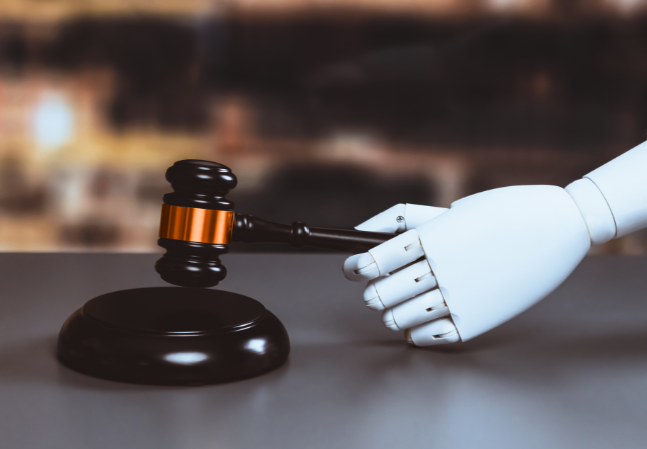Welcome! Save 30% on all CLE, CPE, and Professional Skills webinars, plus 15% off any annual pass with code HOLIDAY25
About the Course
Introduction
This CLE course will guide counsel on leveraging the United States Patent and Trademark Office (USPTO) Examiner Count System to prosecute patents more effectively. The panel will provide insight into the count system and offer strategies for interacting with patent examiners.
Description
The USPTO uses a production-based system made up of "counts" to manage the workload of patent examiners. Examiners accrue counts by completing different tasks in the examination process. The type of action and the timing of those actions are factors in determining an examiner's "counts."
Since examiners are expected to meet quotas for production, practitioners see an increase in examiner activity during certain times of the year, e.g., at the end of each quarter. Understanding the USPTO's inner workings allows patent practitioners to prosecute patents efficiently.
In recent years, the USPTO launched several patent application initiatives to advance and support the patent examination process. Knowledge and use of these initiatives can assist applicants through the examination process and provide benefits.
Listen as our authoritative panel of patent attorneys offers insights and an in-depth understanding of the Examiner Count System. The panel, which includes former patent examiners, will discuss the Examiner Count System and how to maneuver through the system, including strategies for interacting with examiners. The panel will offer guidance on current USPTO programs and initiatives and how to leverage them.
Presented By

Ms. Burgy focuses on opinion work, client counseling, patent prosecution and management, and litigation in the chemical, pharmaceutical, and biotechnology arts. She counsels her clients on a diverse range of patent issues. Ms. Burgy assists clients on single-patent issues as well as complex matters involving multiple patents and applications requiring ongoing advice on patent portfolio strategy and development, with an eye towards litigation. Ms. Burgy has assisted clients in the early stages of development through due diligence and patent portfolio analysis.

Mr. Johns maintains a diverse patent practice, including drafting and prosecuting patent applications related to electronics, software, telecommunications, and business methods; providing client counseling and portfolio management; and handling post-grant proceedings including inter partes review and covered business methods. He also provides freedom-to-operate opinions and has assisted on district court litigations related to telecommunications, computer software, and mechanical devices. Before joining Finnegan, he served as a patent examiner at the U.S. Patent and Trademark Office (USPTO) for nearly five years.

Mr. Rajan practices patent litigation and prosecution for a wide range of clients, from startups to established companies. His patent prosecution practice focuses on drafting and prosecuting patent applications in a broad range of technologies, including electrical and computer technologies, healthcare IT software and systems, business methods, and mechanical technologies. He also focuses on the IP issues of emerging technologies such as additive manufacturing, also known as 3D printing.
-
This 90-minute webinar is eligible in most states for 1.5 CLE credits.
-
Live Online
On Demand
Date + Time
- event
Tuesday, October 19, 2021
- schedule
1:00 p.m. ET./10:00 a.m. PT
- Examiner Count System
- Guidance from former examiners to leverage system
- Strategies for interacting with examiners
- USPTO programs and initiatives
The panel will review these and other key issues:
- What impact does the number of claims in the application have on the quality of examination in the first office action?
- How can patent counsel use the incentives of the count system to the client's advantage?
- How and when should patent counsel interact with examiners for effective and efficient prosecution?
Unlimited access to premium CLE courses:
- Annual access
- Available live and on-demand
- Best for attorneys and legal professionals
Unlimited access to premium CPE courses.:
- Annual access
- Available live and on-demand
- Best for CPAs and tax professionals
Unlimited access to premium CLE, CPE, Professional Skills and Practice-Ready courses.:
- Annual access
- Available live and on-demand
- Best for legal, accounting, and tax professionals
Unlimited access to Professional Skills and Practice-Ready courses:
- Annual access
- Available on-demand
- Best for new attorneys
Related Courses

Patent Validity and Entresto: Lessons From the Ongoing Dispute
Tuesday, January 13, 2026
1:00 p.m. ET./10:00 a.m. PT

Evaluating and Acquiring Patent Portfolios: Key Considerations
Thursday, February 19, 2026
1:00 p.m. ET./10:00 a.m. PT

Evaluating and Acquiring Patent Portfolios: Key Considerations
Available On-Demand

Invalidity Opinions in Patent Litigation: Shielding Against Liability
Available On-Demand



